Anthracnose of Watermelon
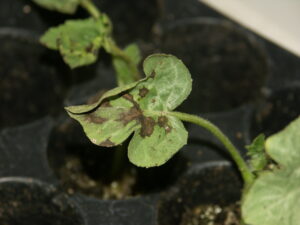
Figure 1. Anthracnose lesion on watermelon transplant. Note angular, jagged lesion.
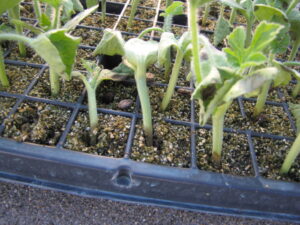
Figure 2. Anthracnose lesions on the hypocotyl of these watermelon transplants has caused the plants to wilt.
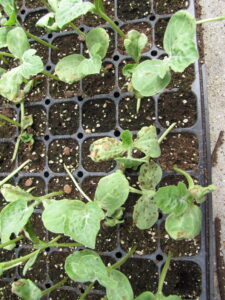
Figure 3. Anthracnose lesion on several watermelon transplants. Lesions are primarily on cotyledons (seed leaves).
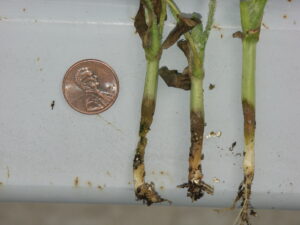
Figure 4. Anthracnose of watermelon occasionally cause lesions on the hypocotyl, between the cotyledon and the soil.
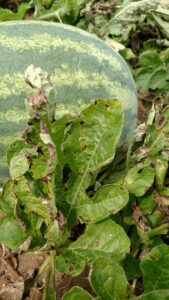
Figure 5. Anthracnose lesions on mature watermelon leaves tend to be angular and jagged.
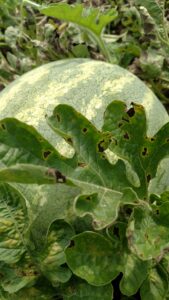
Figure 6. Another photo of anthracnose of watermelon on a leaf. Note the yellow color on the margin of the lesions.
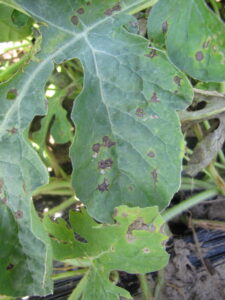
Figure 7. Several anthracnose lesions on a watermelon leaf.
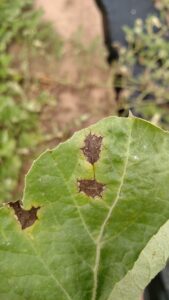
Figure 8. A close-up of a lesion of anthracnose on a watermelon leaf. Note the sharp, angular shape of the lesion.
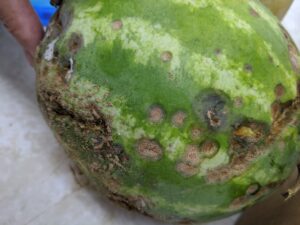
Figure 9. A watermelon fruit with pit-like lesions of anthracnose. Note the orange or salmon-like color of the lesions due to the color of the spores.
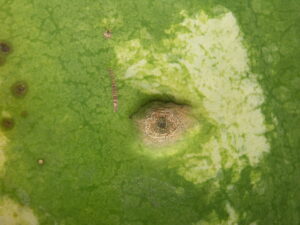
Figure 10. A close-up of a lesion of anthracnose on a watermelon fruit.
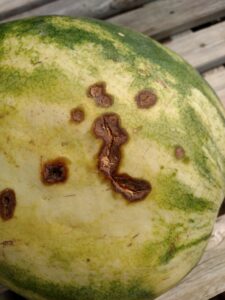
Figure 11. The anthracnose lesions on this watermelon fruit appear more as cracks than pit-like as in other photos. Note that there is still a hint of orange in some of the cracks due to the spore colors. Note also that the lesions tend to be toward the bottom of the fruit as is typical.










